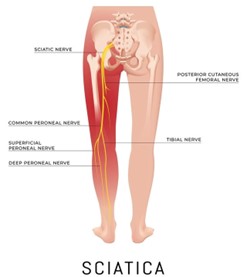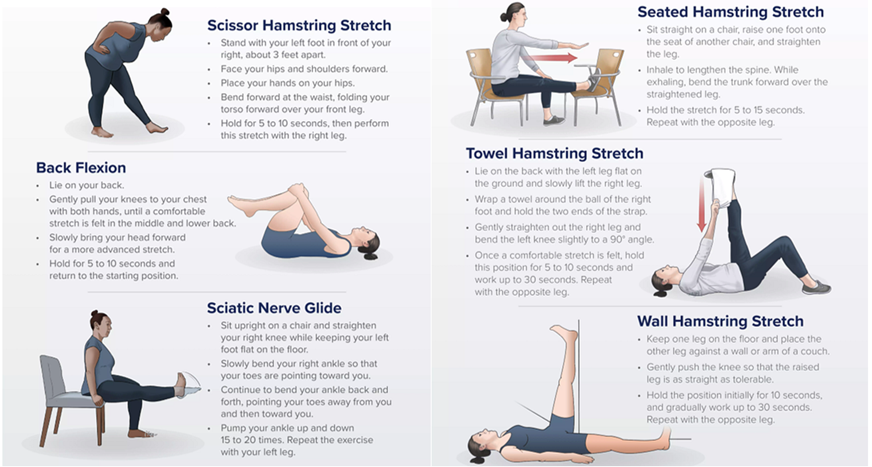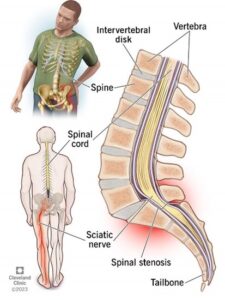The sciatic nerve comes from nerve roots in your spine, it travels through your hip and buttock, down the back of your leg, to your knee and branches down your foot. When something presses on the sciatic nerve or on one of its nerve roots, it can cause pain, burning, stabbing or shooting sensations called sciatica. In most cases the problem is in the spine – even though you feel the pain in your leg.

Symptoms:
- Loss of sensation in one or both legs
- Weakness in the affected leg(s)
- Loss of bowel and bladder control
- Lower back pain and associated restricted movement
Causes:
Disruption to the sciatic nerve can occur through a number of ways.
- Prolapsed Disk: Gel substance between spinal discs can bulge out of the disc and press on the nerve with age.
- Bone Spurs: Osteoarthritis can cause damage to bones resulting in bony growths called spurs that form in the spine.
- Spinal Injuries: An injury to the spine or lower back resulting in spinal disc or nerve complications.
- Spinal Stenosis: Narrowing of the canal in which the spinal cord sits, this narrow can put pressure on the back and nerves in that area.
- Tumor: Cancer cells close to or surrounding the spine which destroy surrounding healthy tissue.
- Abscess: Collection of pus and bacterial infection in the gluteal or pelvic area can irritate or compress the sciatic nerve
Risk Factors:
- Demographic – Individuals aged 20-50 are most likely to have herniated disks. Bone spurs develop more commonly through aging.
- Physical stress on the spine – Occupations that require lifting repeated or heavy loads, twisting the back, maintaining prolonged postures or whole-body vibrations.
- Poor general health – History of lower back pain, smoking, and increased body mass (obesity) can cause stress on the spine. Uncontrolled diabetes increases the risk of nerve damage.
- Psychological stress – Monotonous work or depression.
Prevention and Treatment through Movement:
Maintaining a healthy weight, lifting safely at work or at home and reinforcing good posture are all ways to promote a healthy back and spine and for the prevention of sciatica. Exercising regularly assists with keeping the back and core strong to support the spine. This should include a combination of strength and cardiovascular training working all major muscle groups to allow the trunk to work directly and indirectly through movement.
Sciatica rehabilitation can include stretching, gentle strength training and mobility exercises of the trunk (back and core) and lower body (glutes, legs, and feet). The goal is to progressively increase strength and mobility in these areas by managing the cause of sciatica (stimuli causing disruption to the sciatic nerve). An exercise program for sciatica is not a one size fits all approach – the safest mode of exercise to begin with is stretching (see below). To manage your condition and for severe cases of sciatica, consult an Accredited Exercise Physiologist for a program tailored to you.





